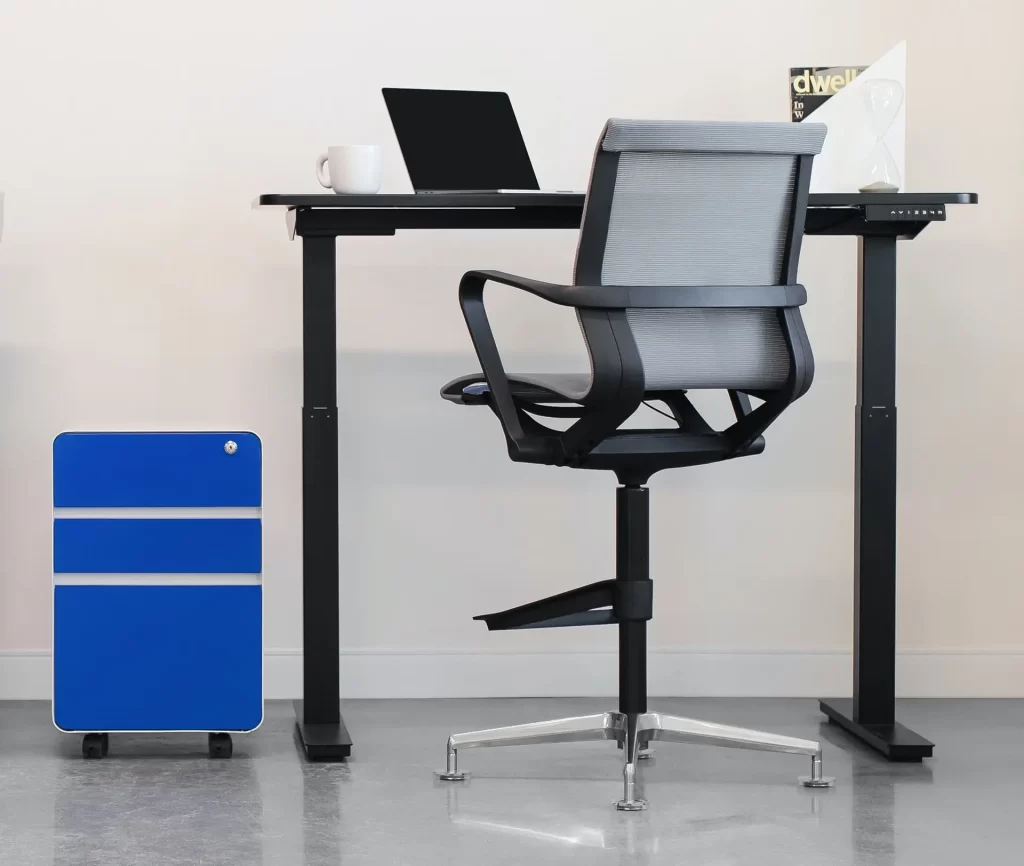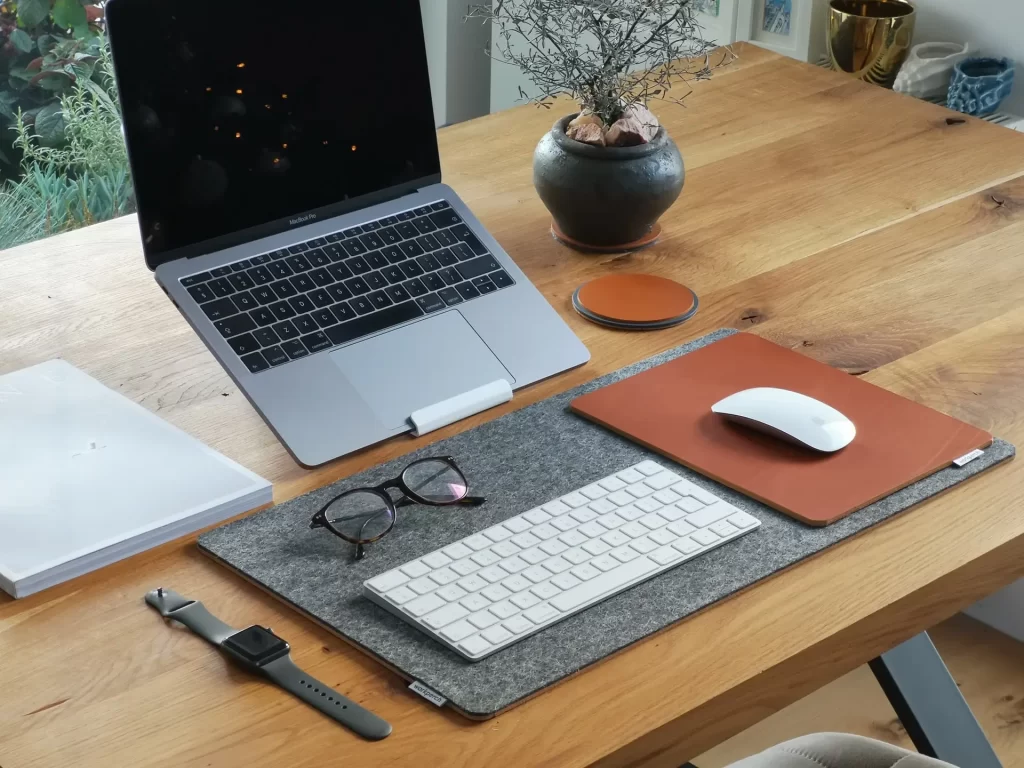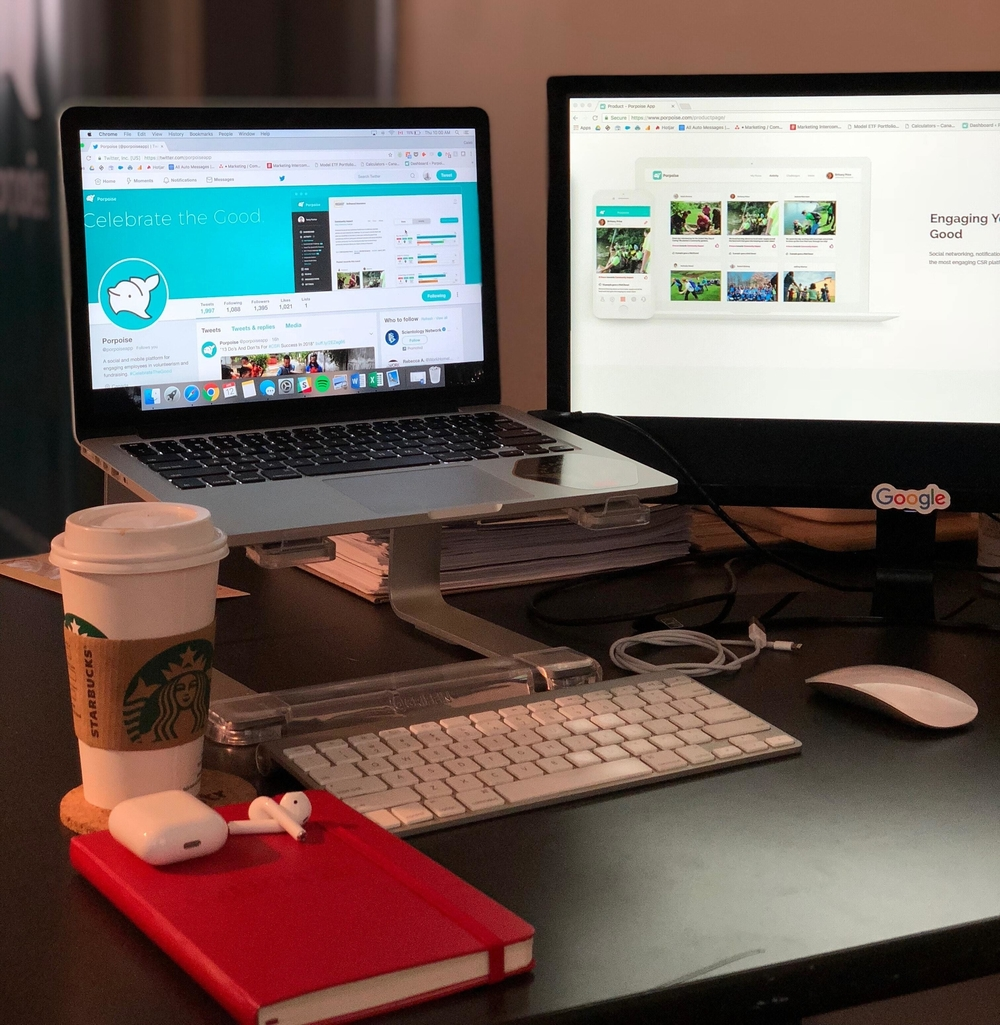
If you work on a computer screen for many hours a day, you must learn good desk ergonomics.
Spending many hours seated, typing, and reading from a screen can cause dry eyes, back pain, headaches, and weight gain.
These problems are worsened when you neglect eye care, position your equipment incorrectly, use a chair that does not complement your desk, and so on.
What you want is to maximize comfort when the body stays in one position for a long time. Good ergonomics enable such comfort.
What Bad Ergonomics Is: 10 Mistakes to Avoid
Bad ergonomics entail the poor placement of tools in your working environment and the repetitive stress incurred from awkward body movements. If bad desk ergonomics are avoided, you can reduce future health problems, work longer hours, and concentrate better as you are not often interrupted by aches and irritation. Here are 10 examples of what to avoid.
1. Not centering the “B” key on your keyboard

The “B” key on your keyboard should be positioned directly in front of you, in the center of your torso. It is not your keyboard that you need to center.
Center the “B” key, so that you can keep your wrists and arms at their neutral positions when typing away. This ensures that you will not be straining as you type.
2. Not centering your monitors

No doubt there are benefits to working on multiple screens. But to reap the benefits, you need to position your screens correctly in order to avoid sabotaging your comfort, eyesight, and output.
If you work on two monitors, consider which is your main monitor. Center that monitor (place it directly ahead of you), while having the other monitor tilted to a comfortable angle for viewing.
If you are using both monitors equally, center both monitors such that you are in the middle, tilting them at a slight angle towards you.
3. Not aligning the top of your monitor or laptop at eye level

Besides centering your screen, you want to place your device at a proper viewing height. If your laptop is too low, you would be hunching over your desk and this causes shoulder and neck strain.
For best ergonomics, ensure that the top of your laptop or monitor is at – or slightly below – eye level.
Use an adjustable laptop stand to customize the height of your laptop for the comfort of your neck and shoulders. Otherwise, use folders, books, or drawers to elevate your laptop or monitor.
Besides raising the height of your screen, it is important to keep your elbows bent at 90 degrees while typing. You want your wrists to rest comfortably in a neutral position on your keyboard/desk, rather than type awkwardly in the air and above your desk.
This means that you might need to invest in an external keyboard (if you are using a laptop) to keep your arms and wrists in their neutral best positions.
4. Having the monitor screen too close to your eyes
Keep your screen at least 20 inches away from your eyes, at about arm’s length. You need to have your monitor close enough for reading, but keeping it too close causes eye discomfort.
Thus, ensure you have a desk large enough so that you can move your monitor backward if necessary.
The larger the monitor, the further away you should sit. For instance, if you are using a 24-inch monitor, you should sit at least 3 feet away.
5. Reaching for your tools

Reaching for your tools is a bad idea.
Know that where your keyboard and mouse should be is just where your arms and wrists naturally end up. Your keyboard should be in front of you, and your mouse should end up next to your keyboard.
When you type, your wrists and arms should be in a neutral position. When you maneuver your mouse, you only move your elbow (not your shoulder) to prevent strain.
People who find themselves reaching for their keyboard or mouse often have small, cluttered desks. Others may be seated at a height too low to maneuver their tools properly.
This article was originally published on unboundist.com. If it is now published on any other site, it was done without permission from the copyright owner.
6. Not having an adjustable chair for working
As you are sitting for multiple hours a day, a comfortable working chair is one of the most important desk essentials you should have. Without it, you will not be able to achieve good desk ergonomics and your productivity will suffer. It is that important.
Get an adjustable chair from a reputable brand for these reasons:
- Getting one with adjustable height will ensure that it fits nicely with your desk’s height.
- If your elbows are not at 90-degree angles while typing, adjusting the height of your chair helps you achieve this.
- Adjustable chairs help you find your most comfortable, natural, and personalized seating posture
These are some of the best office chairs in the market: Herman Miller Aeron, Embody, Mirra 2, Steelcase Gesture, Leap v2, and Humanscale Freedom.
7. Dealing with glare

Another mistake to avoid is glare. If a light source is too bright or positioned at the wrong angle, it can cause a glare on your monitor screen. This can result in squinting and eye strain.
If you have a floor or wall lamp behind you as you work, it can create glare on your monitor and hurt your eyes.
Thus, it is best to position your light sources at a 90-degree angle to your screens. Otherwise, using a desk lamp, adjustable lighting, or repositioning your desk are ways to help reduce glare.
8. Neglecting eye movement and eye exercise
Eye and vision issues occur due to long hours of using digital devices – that is computer vision syndrome. The good news is that good eye movement and eye exercises can reduce the damage caused.
Our normal blink rate is 15-20 blinks per minute, but when we are hyper-focused on our screens, our blink rate reduces to less than 7-10 blinks per minute. Thus, we must remember to blink frequently.
Furthermore, use the 20-20-20 rule: Look at something 20 feet away for 20 seconds every 20 minutes spent using a screen.
Set a 20-minute timer to help you incorporate this practice as a habit over the next few days.
9. Not blocking out blue light after evening time
Blue light from our electronic devices can result in eye strain, dry eyes, vision issues, macular degeneration, and cataracts. It also affects melatonin production and can disrupt your natural sleep-wake cycles.
Thus, block blue light in the evenings by 1) setting up night mode on your mobile phone and 2) using apps like Flux or Iris on your computer. This costs you little to no money at all.
Getting a pair of blue light blocking glasses is known to increase contrast on your screen, help your ability to focus, and thus combat eye strain.
10. Not getting up from your chair every 30 minutes
Sitting is known as a silent killer. A sedentary lifestyle is linked with risks of heart disease and diabetes.
Here is the good news: Studies found that switching between standing and sitting every 30 minutes reduces blood sugar spikes, reduces lower back pain, and even promotes fat loss.
Not to mention, if you have an adjustable laptop stand or other standing desk tools, you can transition into standing mode without disrupting your work and focus. If there is a lifestyle hack, this is it.
Stand up every half an hour, but if it is not possible, get moving at least once every hour. It is a worthwhile habit.